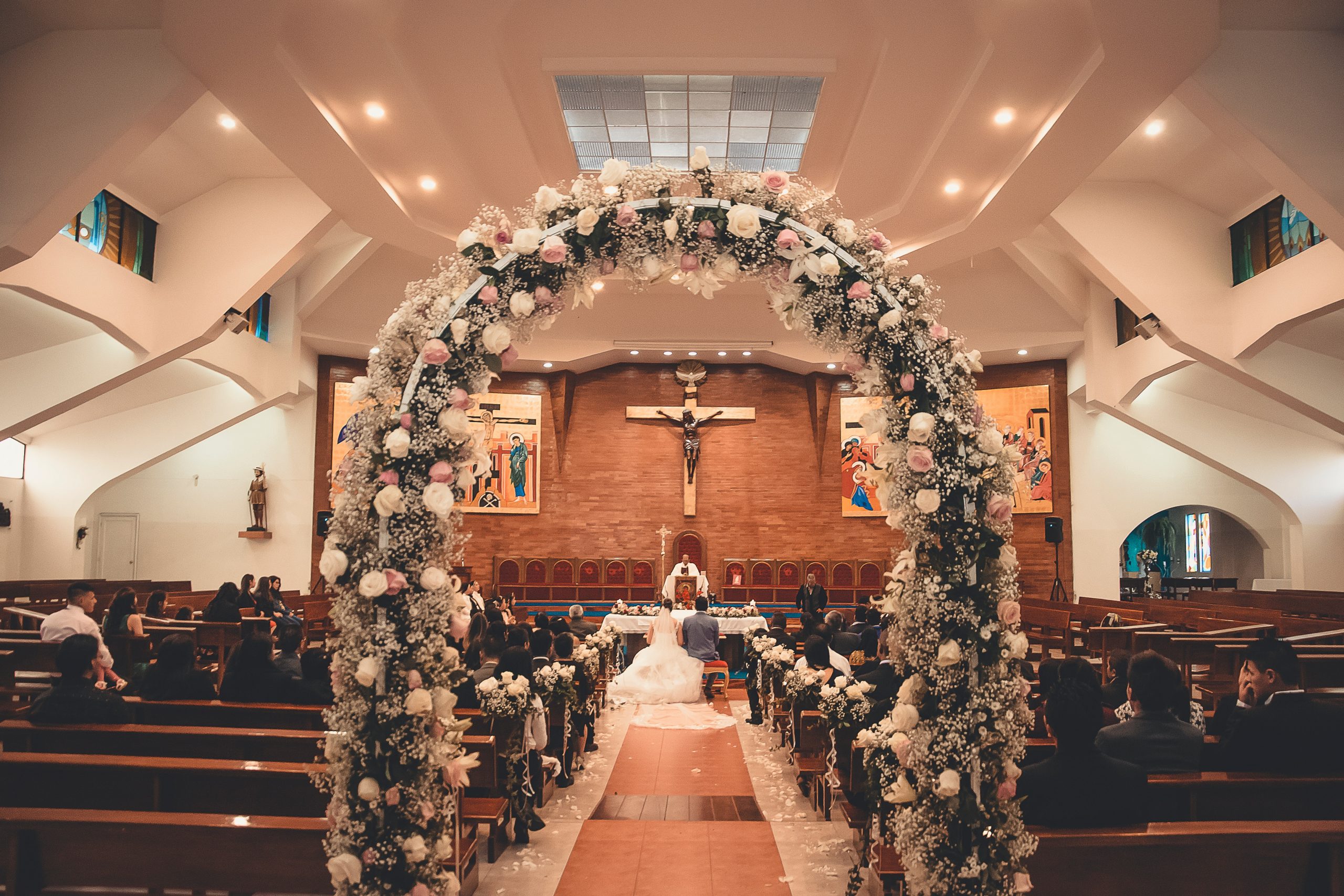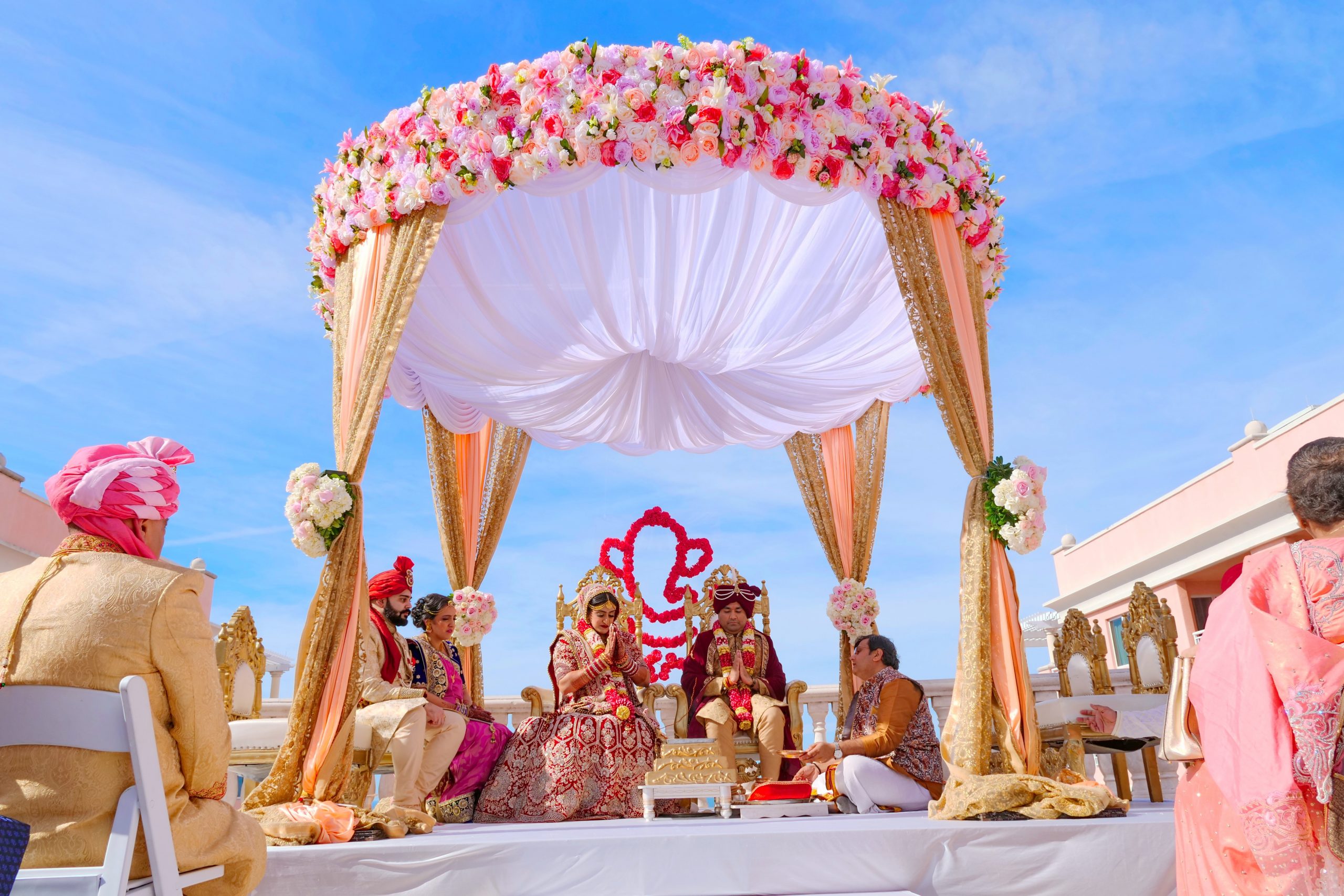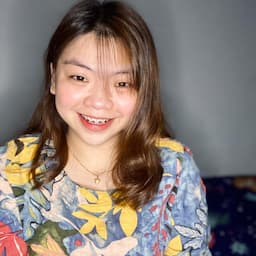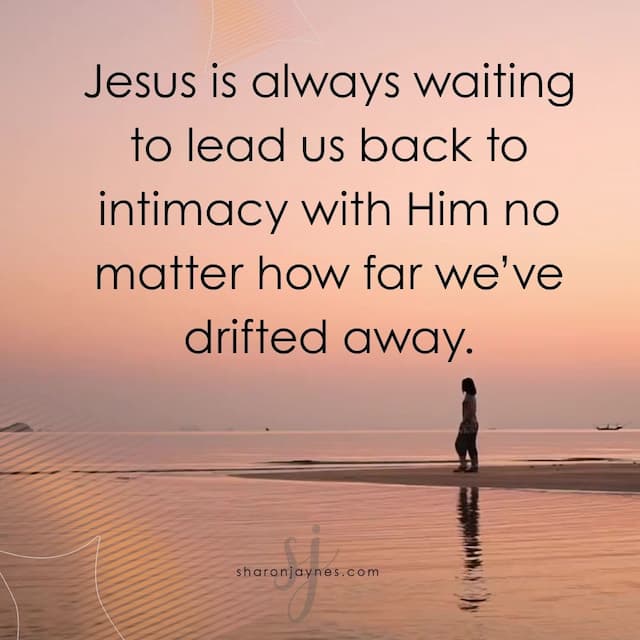How People Understand Different Religious Wedding Customs and Their Symbolic Meanings
Have you ever wondered how people of different faiths celebrate weddings? Are you interested in learning about the beautiful and diverse wedding customs of different religions?
This article will take you to discover the unique traditions and rituals accompanying weddings across various faiths.
We will explore the elaborate Hindu wedding ceremonies with colorful decorations and meaningful rituals. Additionally, we will dig into the modest but significant Christian wedding rituals and how each religion celebrates love.
Also, this article will delve into Islamic wedding customs. These customs emphasize the importance of family and community involvement in marriage. Additionally, we will explore the Jewish wedding customs that highlight the significance of tradition and commitment.
Understanding the symbolic meaning of wedding customs helps us appreciate the richness and beauty of diverse cultures and religions.
So, whether you’re planning a wedding or just interested in the globe, join us as we discover religious wedding rituals.
Christian Weddings

Christian weddings are a beautiful and significant celebration of the love and commitment between two individuals. Each symbol in the wedding ceremony highlights marriage’s value in Christianity.
The wedding ring is one of the most recognizable symbols of a Christian wedding. The ring represents the never-ending love and commitment between the couple, as it is a circle. It is also a reminder of the couple’s promise to each other and God to remain faithful and devoted.
Another important Christian wedding symbol is the white wedding dress, representing purity and innocence. The tradition of wearing white dates back to the Victorian era and has become a staple in Christian weddings worldwide.
The wedding ceremony itself is full of symbolic gestures. For example, the lighting of the unity candle symbolizes the union of the couple and their families. Similarly, the exchange of vows and rings signifies the couple’s commitment to each other and God.
The Christian wedding ceremony also includes reading biblical passages and reciting prayers, emphasizing the importance of faith in the marriage. It is common to have hymns and songs celebrating the couple’s love and faith.
Hindu Weddings

The Hindu marriage ceremony is a multi-day affair, with many different rituals and customs that take place for several days. The wedding ceremony is the most important part of the celebration, typically lasting several hours. The Hindu marriage ceremony unites two people in holy matrimony. It is a sacred ceremony that is filled with symbolism and meaning.
One of the most important aspects of a Hindu wedding is the exchange of garlands between the bride and groom. The jai mala ceremony is a tradition in Hindu weddings, and it symbolizes the bride and groom’s acceptance of each other. In this ceremony, the couple exchanges garlands of flowers, which are usually ornate and beautiful.
Another important tradition in Hindu weddings is tying together the bride and groom’s garments. During the Hindu wedding ceremony, the bride and groom perform the Gath Bandhan ceremony by tying the bride’s sari’s end to the groom’s sherwani. This symbolizes the union of two individuals into one entity and the beginning of their journey together.
The saptapadi is another important ritual in Hindu weddings. It is a seven-step walk that the bride and groom take together around the sacred fire. Each step represents a vow they make to each other, including promises to love, honor, and respect each other. This ritual symbolizes the beginning of their journey together as husband and wife and their commitment to each other.
The sindoor and mangalsutra are also significant symbols in Hindu weddings. The sindoor is a red powder that the groom applies to the parting of the bride’s hair, symbolizing his love and commitment to her. The mangalsutra is a necklace the groom ties around the bride’s neck, symbolizing his protection and dedication to her.
Muslim Weddings

Muslim wedding traditions are deeply rooted in Islamic culture. From Istikhara to the Walima reception, each tradition carries significant meaning and is a testament to the couple’s love and commitment.
Istikhara is a prayer that Muslims perform before embarking on any significant decision, including marriage. The prayer asks for guidance and clarity in decision-making, ensuring the couple makes the right choice in their union.
The Mahr is a gift the groom gives the bride, symbolizing his commitment to providing for her throughout their marriage. Before the wedding, the couple agrees upon the value of the mandatory part of the marriage contract. The Mahr can be in the form of money, property, or any other gift that has value.
Moreover, Nikah is the official wedding ceremony in Islam, where the couple signs the marriage contract. It is a binding agreement that outlines the terms and conditions of the marriage, including the rights and responsibilities of both the husband and wife.
The Wali is a guardian appointed to oversee the marriage process and protect the bride’s interests. This is often the bride’s father, but it can be any male family member. The Wali ensures that the marriage contract is fair and equitable and that the bride’s rights are protected.
The Muslim wedding attire is typically modest and conservative, with the bride wearing a hijab and the groom dressing in traditional Islamic clothing. The bride’s dress is often ornate and heavily embroidered, symbolizing her beauty and purity.
Furthermore, Walima is a reception held after the Nikah ceremony. It is a joyous occasion filled with music, dancing, and delicious food. It often involves gathering family and friends to celebrate the couple’s union.
Sikh Weddings

Sikh wedding traditions are rich in symbolism and significance. They reflect the values and beliefs of the Sikh community and aim to strengthen the bond between the couple.
The Anand Karaj, Lavan, Kirtan, Sehra Bandi, and Varmala ceremonies are essential rituals for a Sikh wedding. The Sikh community performs these rituals with great devotion and reverence as they hold a unique meaning and purpose.
The Anand Karaj ceremony is the most sacred Sikh wedding ritual. The Anand Karaj ceremony is the most sacred Sikh wedding ritual. To begin the event, the Sikhs recite the Ardas, a prayer to God, followed by singing Guru Granth Sahib hymns. They perform this in a Gurdwara with their holy book, the Guru Granth Sahib.
After the Anand Karaj ceremony, the couple undergoes the Lavan ceremony. This four-part ritual depicts their journey to happiness. While singing Lavan songs, the bride and groom circle the Guru Granth Sahib four times, representing the four stages of spiritual growth the couple must experience.
In addition to the Lavan ceremony, Kirtan is another essential Sikh wedding ritual. It is a musical recitation of Guru Granth Sahib hymns that seeks God’s blessings for the couple. A trained singer and Sikh musicians lead the Kirtan ceremony.
Before the wedding, the family holds the Sehra Bandi ceremony at the groom’s home. In this ritual, the groom’s father ties a flower Sehra on the groom’s turban, symbolizing the groom’s love for his wife and eagerness to marry.
Finally, the wedding begins with the Varmala ceremony, where the couple exchanges flower garlands, representing their lifelong commitment to each other.
These traditions are a testament to the enduring power of love and the commitment to a lifelong union.






